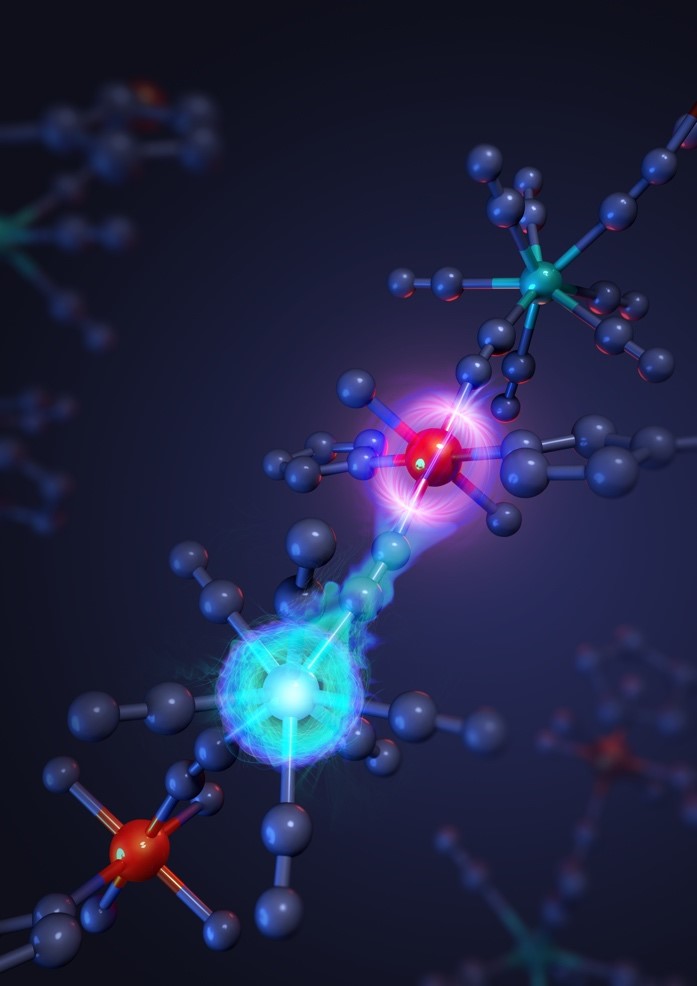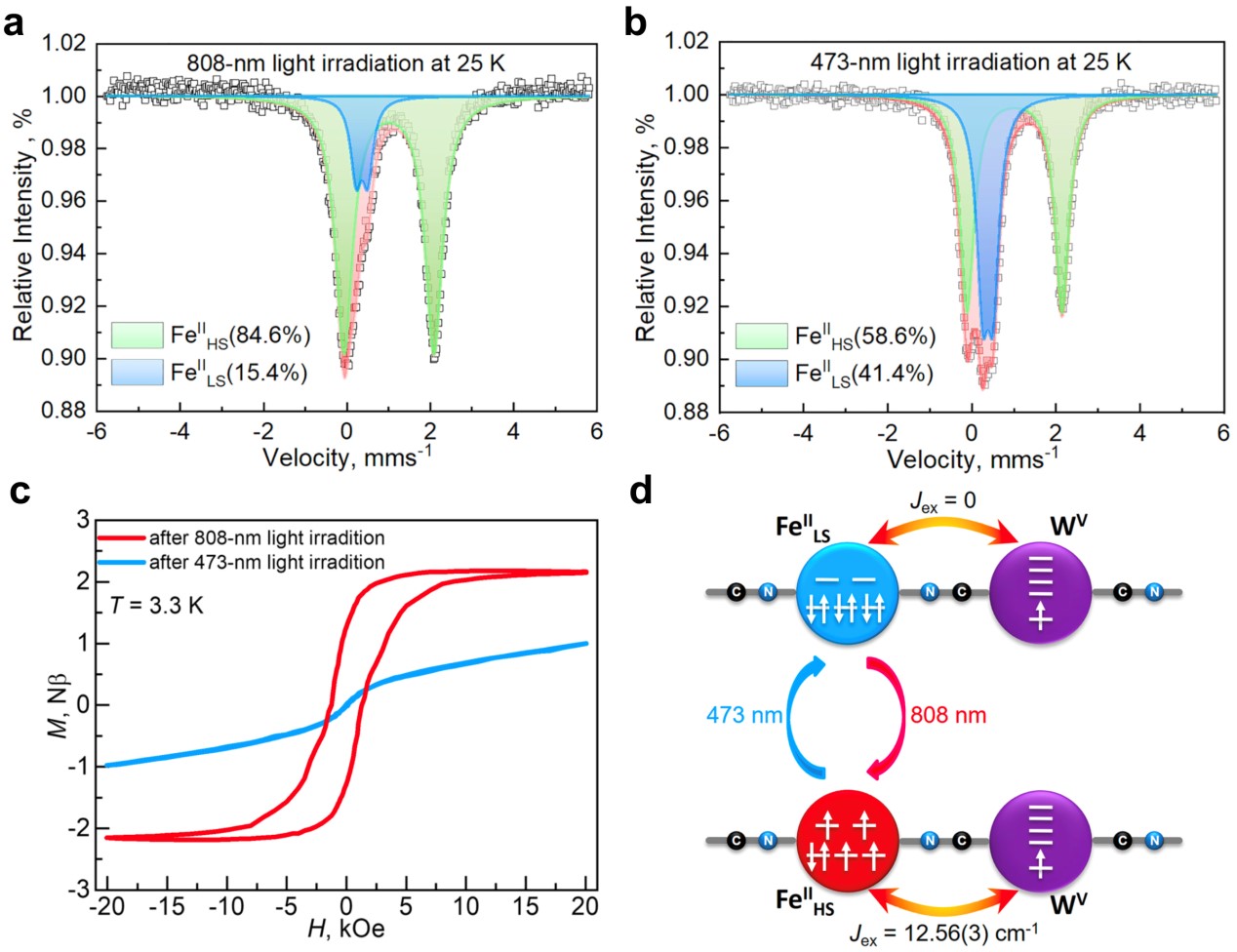Recently, Prof. Liu Tao’s group from State Key Laboratory of Fine Chemicals, Dalian University of Technology (DUT), has made important progress in manipulating hysteresis of photo-switchable molecular nanomagnets by assembling [W(CN)8]3-units coordinated with FeII-based spin-crossover motifs into one-dimensional chains. The work was published in Nature Chemistry entitled Switching the magnetic hysteresis of an [FeII–NC–WV]-based coordination polymer by photoinduced reversible spin crossover.

Magnetic bistable materials that feature magnetic hysteresis are comparable to elementary binary units and promising for application in switches and memory devices. Especially, photo-switchable molecular nanomagnets have caught increasing attention from the research field, since they provide a new way to control the magnetic bistable states by switching in the 0→1→0 sequence, which is crucial for future technological demands for high-density data storage and processing. However, the reported photoinduced molecular nanomagnets failed to exhibit a magnetic hysteresis that related to binary units and cannot be switched off by alternating light irradiation. In this work, they design a molecular material that consists of parallel cyanide-bridged [FeII–WV] coordination chains linked together through rigid bis (imidazolyl)–benzene ligands. Magnetic study demonstrates that it is a photo-switchable molecular nanomagnet. The paramagnetic high-spin and diamagnetic low-spin states of the spin-crossover FeIIions can be interconverted by reversible light-induced excited spin state trapping (LIESST) by alternating between light irradiation of 808 and 473 nm. At 1.8 K, under 808-nm-light irradiation, magnetic interactions between the photogenerated paramagnetic high-spin FeIIcentres and the WVcentres lead to long fragments that exhibit single-chain magnet behaviour, with a wide magnetic hysteresis and a large coercive field of 19 kOe; under a 473 nm light, isolated FeII–WVfragments behave as single-molecule magnets instead. At 3.3 K, the high-spin form still displays magnetic hysteresis, albeit narrower, whereas the low-spin one does not.

This work represents the first example of photo-switchable molecular nanomagnetswhose magnetic hysteresis can be reversibly switched on and off. They hope this approach can be applied to the design of other SCO-based functional complexeswith the LIESST effect as well as for the development of various optically switchable molecular multifunctional materials.
The work was supported by both the National Natural Science Foundation of China and DUT. Dr. Zhao Liang from State Key Laboratory of Fine Chemicals is the first author, and Prof. Liu Tao and Associate Prof. MengYinshanare the co-corresponding authors.
Link to the paper: